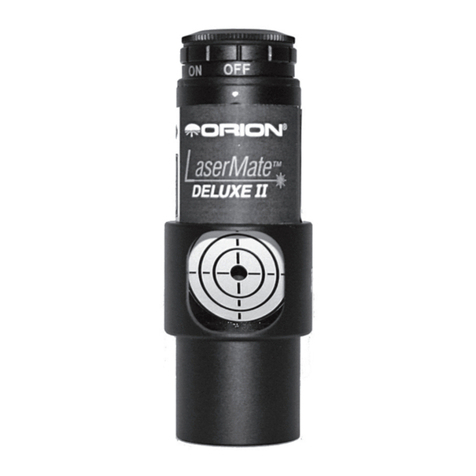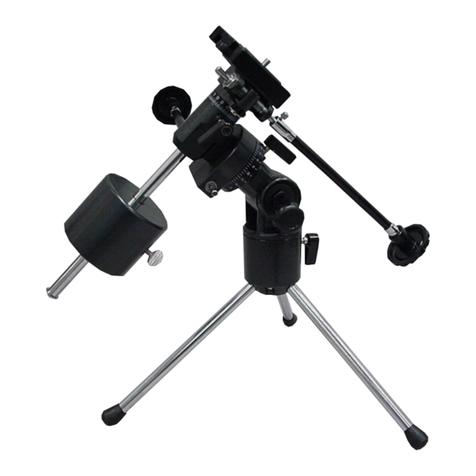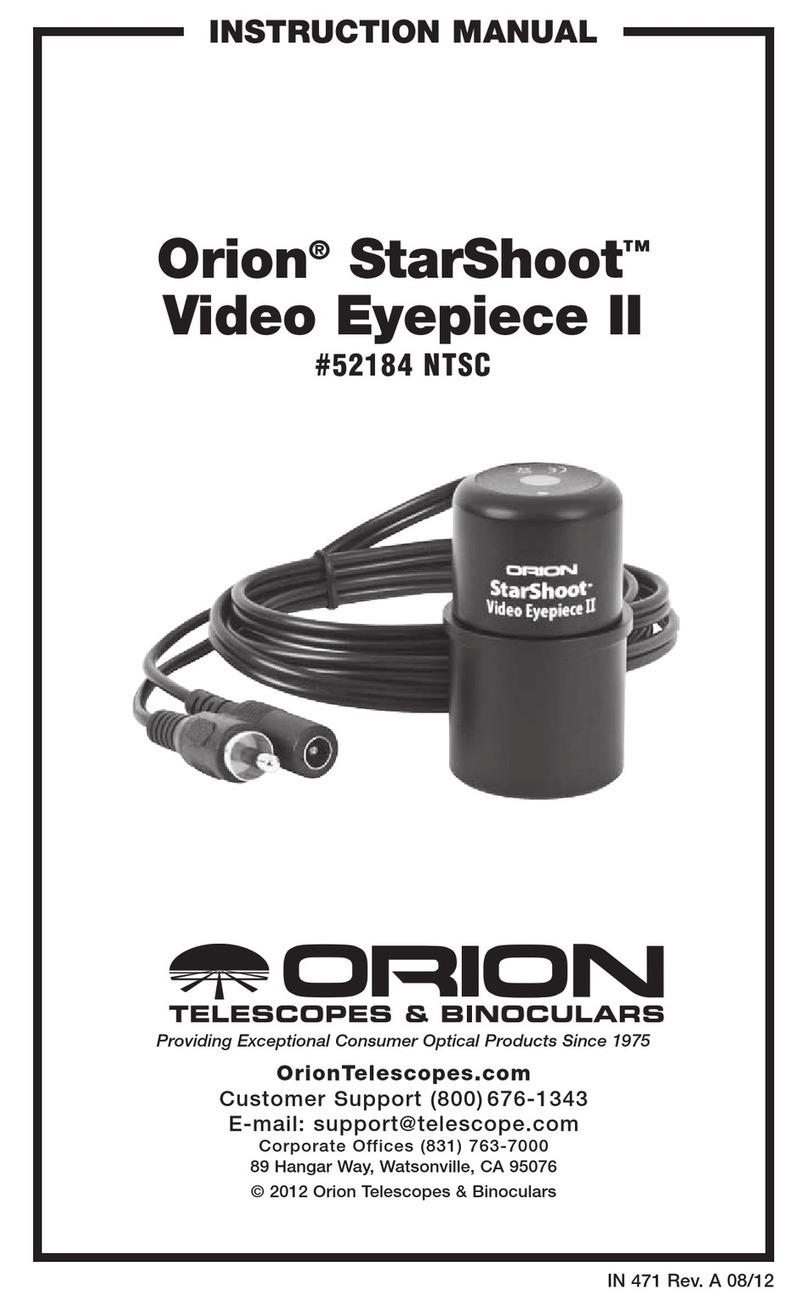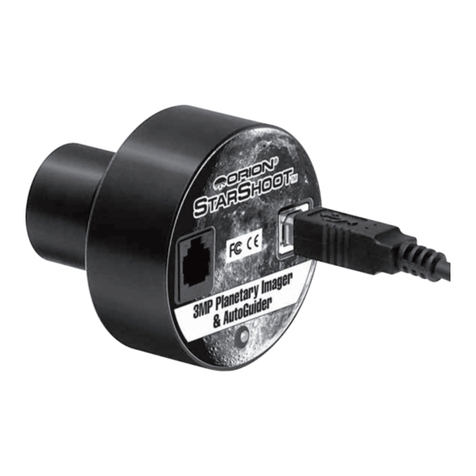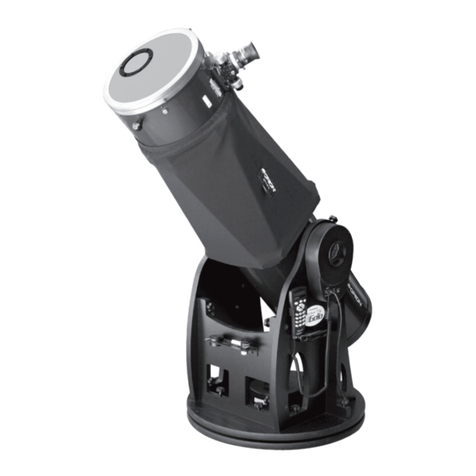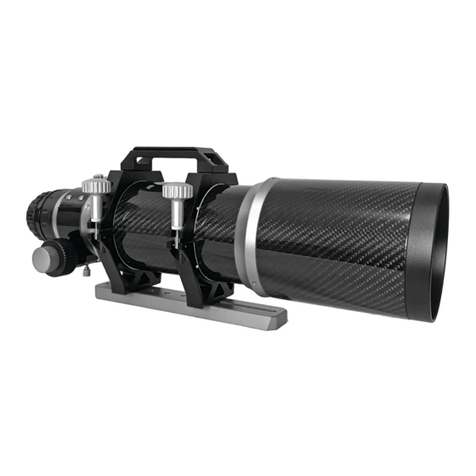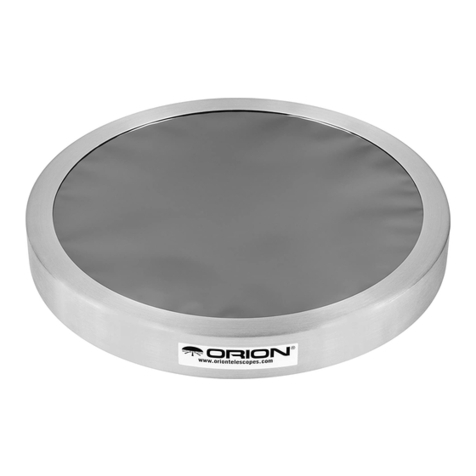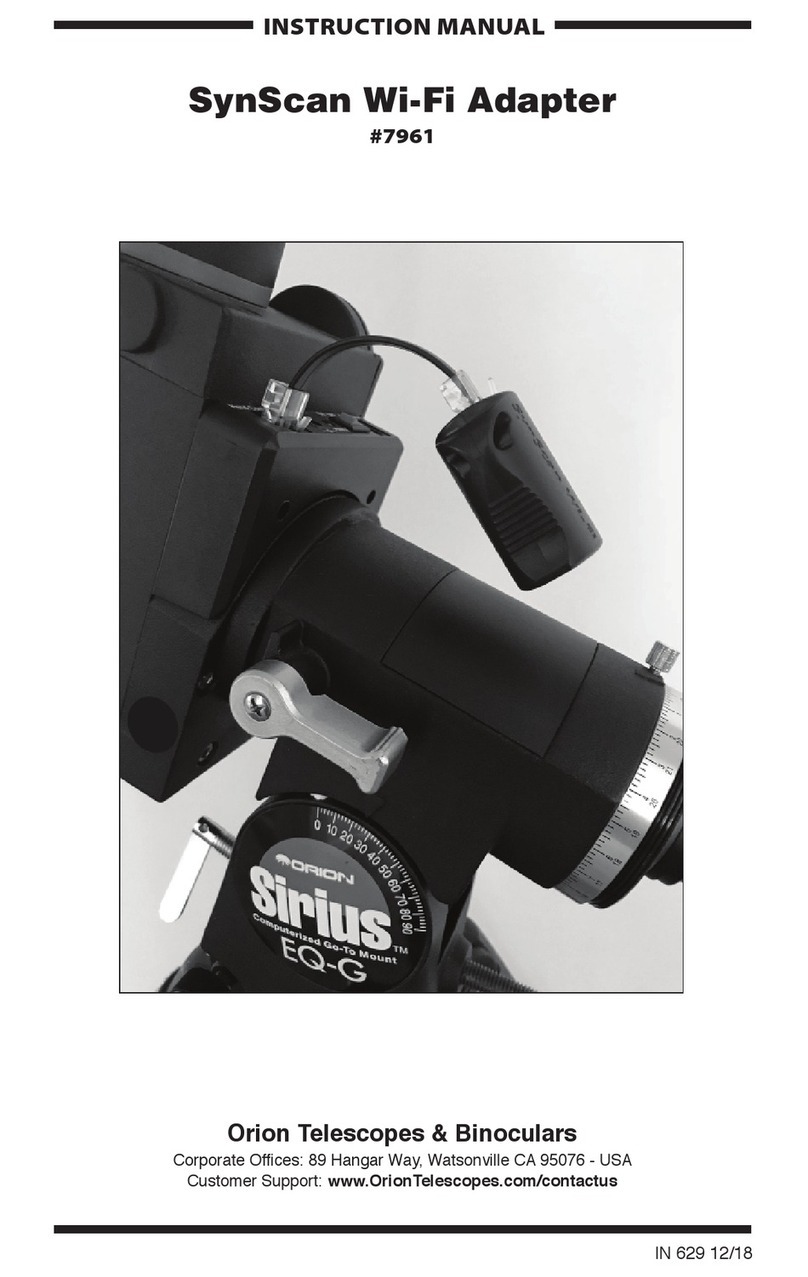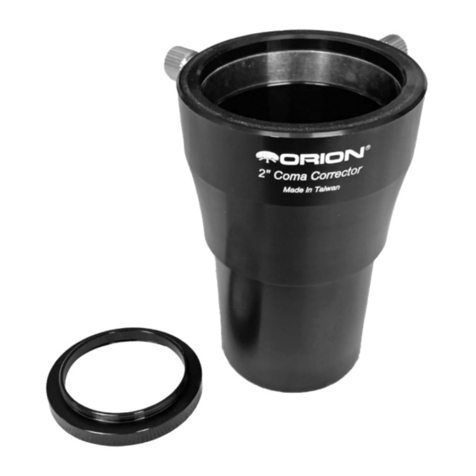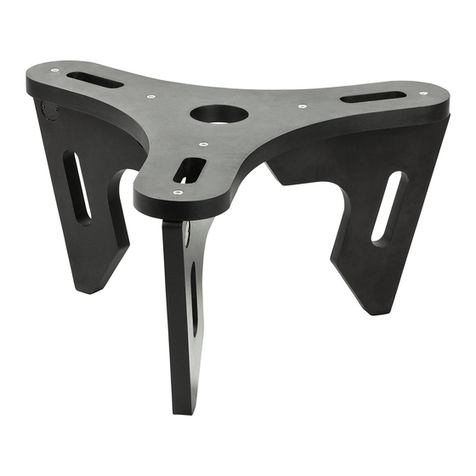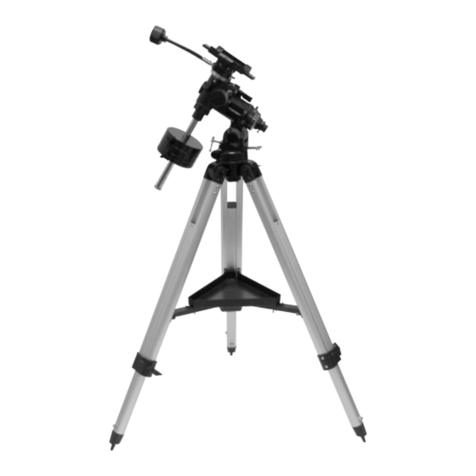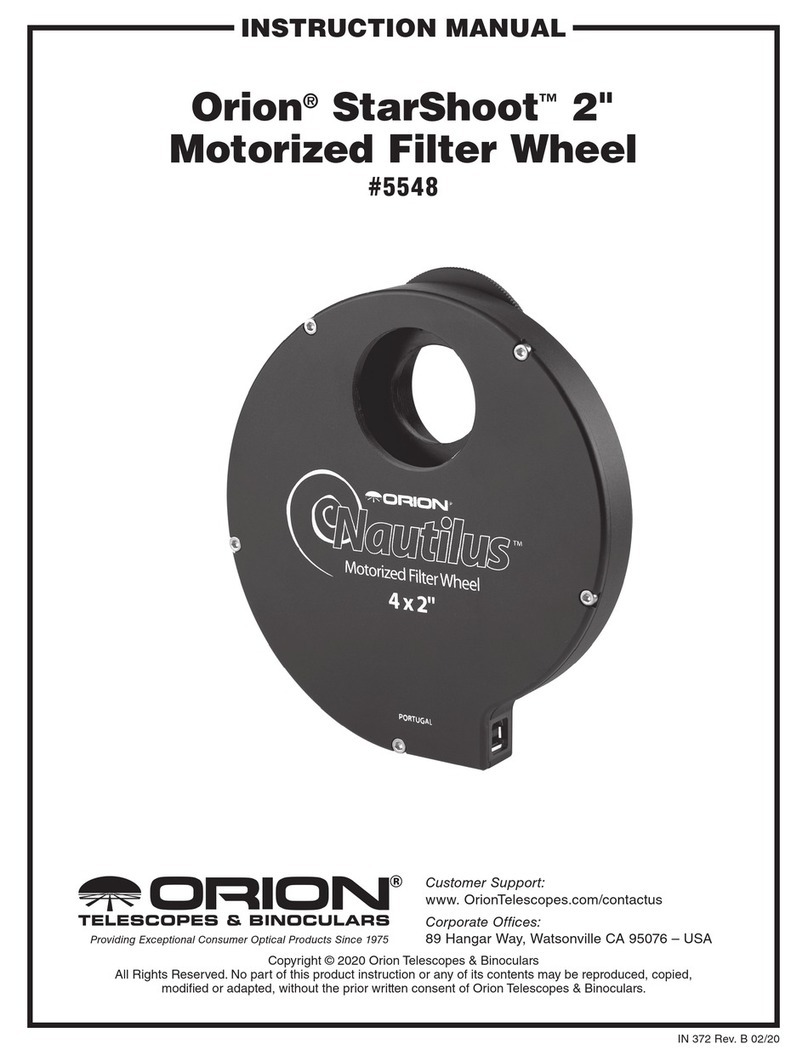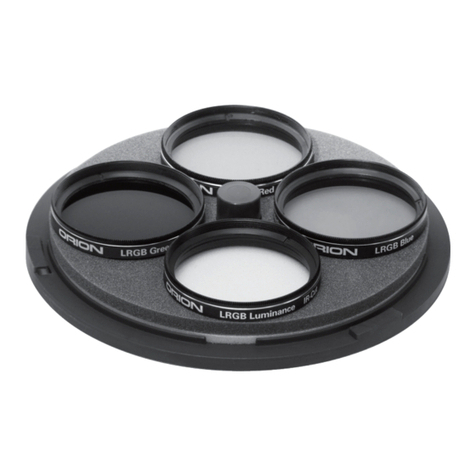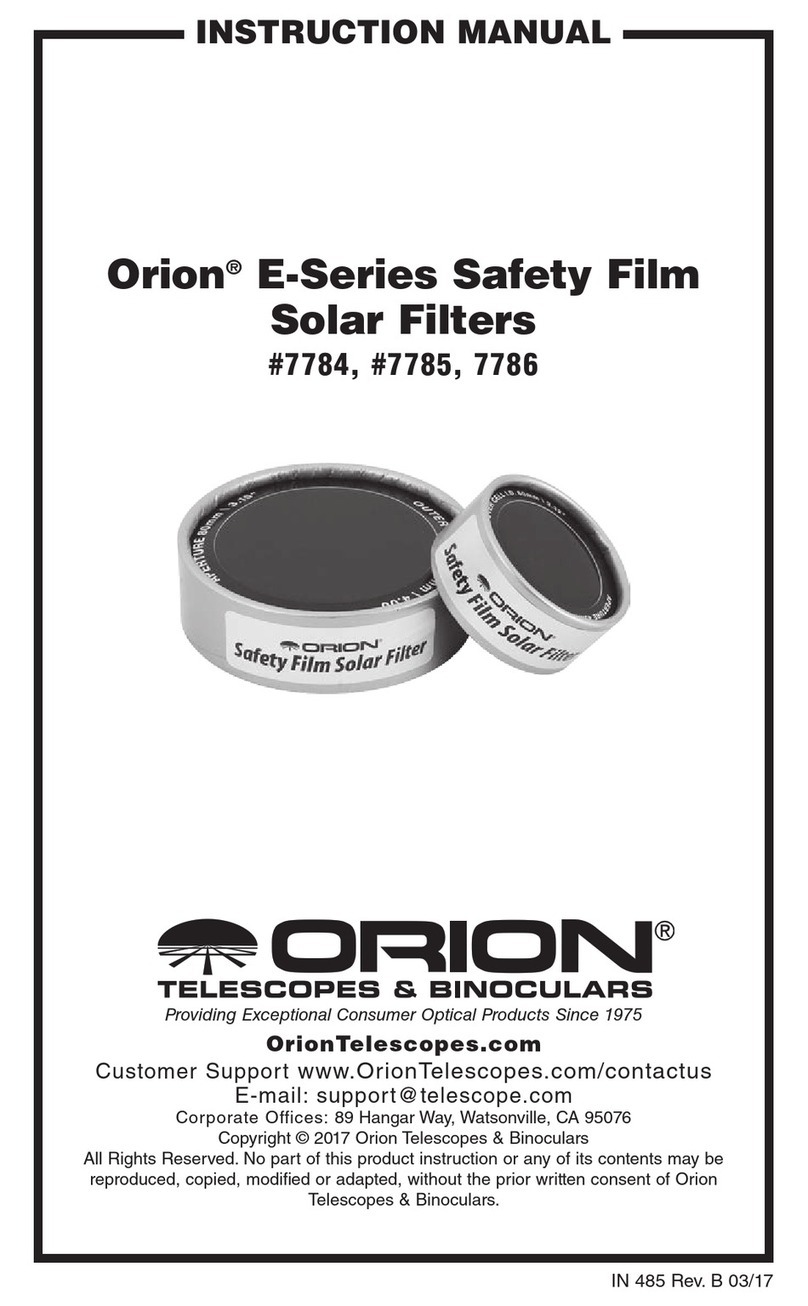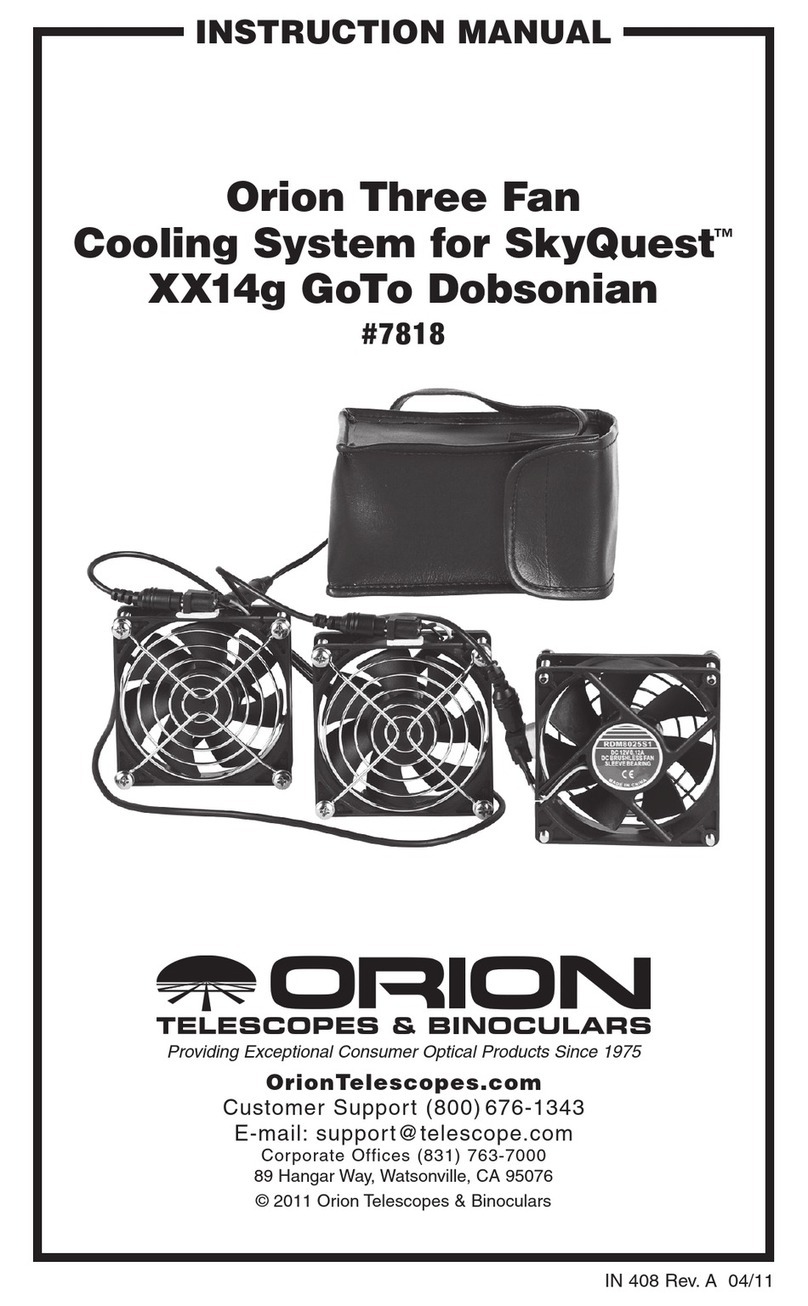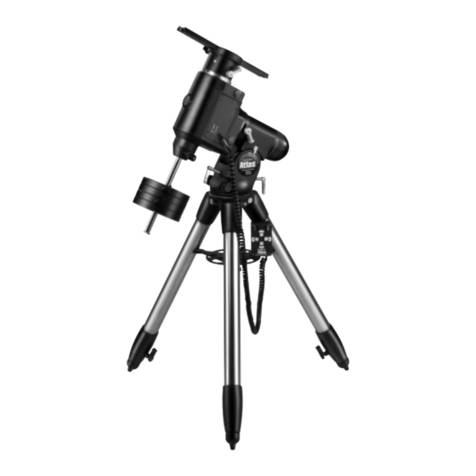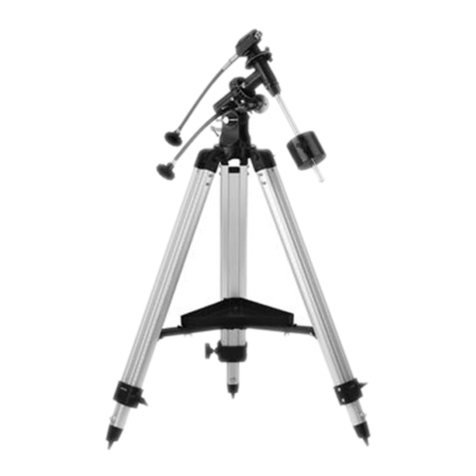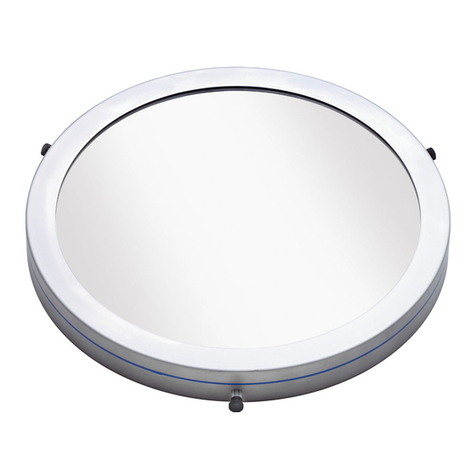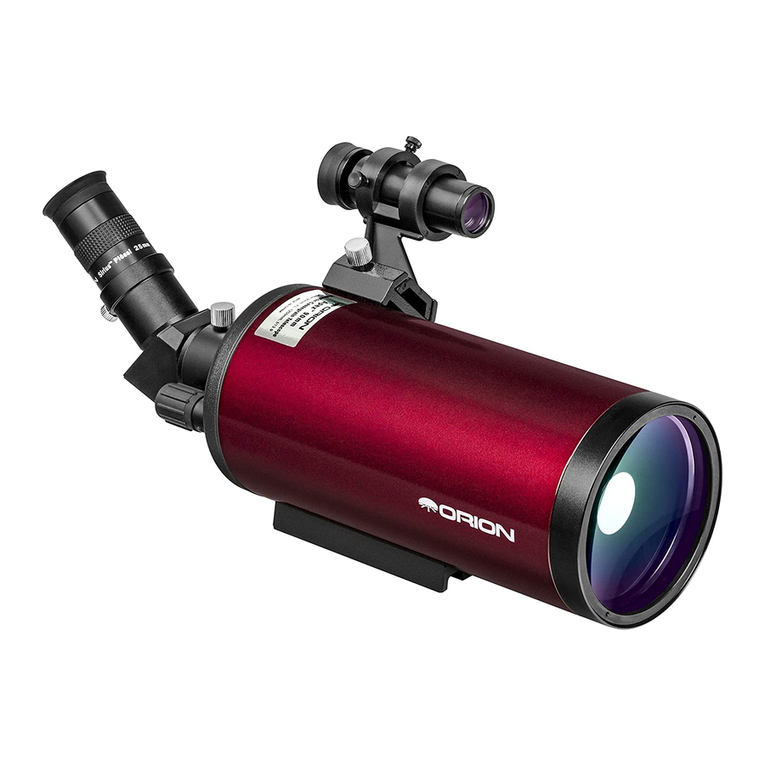
Congratulations on your purchase of an Orion Truss Tube Ritchey-Chretien Astrograph (TTRC). These compact but large-aperture
telescopes are designed and optimized for high-performance astrophotography with CCD and DSLR cameras. Sporting an optical
design comprising hyperbolic primary and secondary mirrors, the RC is highly regarded by advanced astrophotographers and pro-
fessional observatories worldwide. Even the vaunted Hubble Space Telescope is a Ritchey-Chrétien. Orion TTRCs deliver excep-
tional image quality and resolution with zero image shift and minimal coma. Either one of these superb instruments, when paired
with a solid mount, will take your imaging pursuits to a whole new and very exciting level.
Unpacking Your Telescope
Use care when unpacking the shipping carton. We recommend
keeping the box and all original packaging materials. In the
event that the telescope needs to be shipped to another loca-
tion, or returned for warranty repair, having the proper packag-
ing will ensure that your telescope will survive the journey intact.
Returns for refund or exchange will not be accepted without all
of the original packaging. Make sure that all the items listed in
the Parts List below are present.
Parts List
QTY ITEM
1 Truss Tube RC optical tube assembly
1 2" Extension ring
2 1" Extension rings
1 Secondary mirror dust cover
1 Primary mirror dust cover
1 Battery holder (for fans)
Truss Tube Design
Orion TTRC telescopes feature a Serrurier truss design -- the
same truss conguration as the 200-inch Hale telescope at the
Palomar Observatory! Developed by engineer Mark U. Serrurier
in 1935 specically for the Hale telescope, this design utilizes
two sets of opposing truss tubes on either side of the declina-
tion pivot plane. The trusses are designed to effect an equal
amount of exure, which allows the optics to stay on a common
optical axis. When exing, the "upper" truss resists tension and
the "lower" truss resists compression. This keeps the optical
elements parallel to each other no matter how the telescope is
oriented, thus keeping optical collimation precisely intact.
The truss tubes in the Orion TTRC telescopes are made of a
carbon ber-reinforced composite material with a very low ther-
mal expansion prole. Stainless steel ball and socket hardware
connects the truss tubes to the telescope’s three large CNC-
machined aluminum support plates.
The truss design of the optical tube is of course an open tube
design. While both the primary and secondary mirrors are
recessed within baffled cylindrical housings, it is still possible
that ambient light from one’s observing or imaging location
could have an adverse effect on image contrast. It’s best to use
these telescopes at a truly dark site to avoid such intrusions. If
necessary, however, you should consider making or purchasing
an opaque fabric “shroud” to cover the tube assembly between
the front and rear plates. A shroud will block stray light from
entering the optical path as well as help to prevent dew forma-
tion on the mirrors.
The 3.3"Linear Bearing
Crayford Focuser
Orion TTRC telescopes come standard with a CNC-machined,
3.3” dual-speed (10:1) linear bearing Crayford focuser (Figure
1). The linear bearing feature consists of a stabilizing track on
the underside of the drawtube that provides extra rigidity for
carrying heavy payloads (Figure 2). Drawtube exure is vir-
tually eliminated by stabilizing the drawtube within the focuser
housing. The oversized 3.3"-diameter drawtube terminates in a
2" compression ring accessory collar, and a 1.25" compression
ring accessory collar is also included.
The focuser’s 10:1 ne focus adjustment helps you zero in on
the exact focus point. Every 10 turns of the small, black ne
focus knob equals a single turn of the large coarse focus knob,
to enable the micro-adjustment necessary for the sharpest
images possible. Use the coarse focus knob until your object is
as close to focus as possible, then make ne adjustments with
the black ne focus knob.
The focuser is also equipped with both a tension adjustment
knob for the drawtube and a drawtube locking knob.
The tension adjustment knob is on the underside of the focuser
while the locking knob is on top. We recommend keeping the
tension adjustment knob fairly tight at all times as this will mini-
mize drawtube exure and slippage.
The focuser can be rotated to a desired angle prior to nal
focusing for astrophotographic framing by slightly loosening the
focuser attachment collar (turning it counterclockwise), then
rotating the focuser to the desired position before retightening
the collar.
Extension Rings
Included with your Orion TTRC telescope are three thread-on
extension rings (Figure 3).These extension rings are provided
to allow multiple visual or photographic accessories to reach
focus, depending on their backfocus requirements. They are
WARNING: Never look directly at the Sun through
your telescope—even for an instant—without a
professionally made solar filter that completely
covers the front of the instrument, or permanent eye
damage could result. Young children should use
this telescope only with adult supervision.
2
